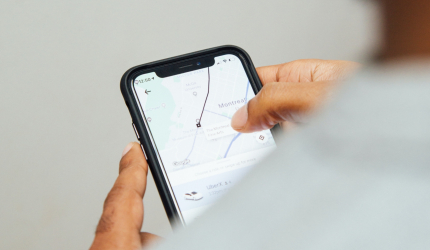A great many articles on internet deal with responsive design. This practice consists in making a site viewable in optimal conditions and from any terminal, whether that be mobile or fixed.
I would nevertheless like to sing the praises of this technique which goes some way to providing a better user experience and yet which remains under-used by businesses.
In his book Marketing Mobile – T. Pirès describes 3 different types of responsive design:
– Responsive Web Design (RWD) is the simple re-adaptation of content using style sheets. So, there is little differentiation in the content. For example, an office worker visiting the internet site of Nike will be less likely to click on “Find the nearest shop” than someone who’s on the move and using a mobile device. RWD doesn’t reorganize the buttons adapting them.
– Two distinct sites. One for the mobile and one for the desktop. It’s interesting in terms of adaptability. But, the maintenance costs of both sites are high and so will be managing it through SEO/SEM as well as watering down visibility on search engines.
– Dynamic Serving consists in using different HTML codes and thus implementing different interfaces for terminals but through one URL. A single URL redistributed through various different codes. This technique is interesting although expensive. The terminal model is detected by the server thanks to the user agent. But, the user agent is a terminal model. This means that constant adaptation of the date base of user agents must be carried out. This is expensive but it seems to me to be the best if a technology watch is also carried out. But, you’ll be dragging along with you an umpteenth number of versions of the code…
We are not going to reinvent the wheel or deal with the same old thing that you’ve heard through and through before. These techniques all have their downsides as well as their advantages.
For example, should an application for an E-commerce in Responsive Design send the same items on sale to a teenager and a senior executive? Of course not.
A native app does it “natively”. But, what about a web responsive site?
It can never be said enough: think about your user before you think about the navigator!
Responsive Design has never looked so good, but it is important to make it even better by integrating the user when thinking things through.
Beyond the terminal, what types of situations could influence user behavior? Some of the following could be looked into:
– Geographic location. A mobile user in an urban environment is more likely to order a product in an on-line shop than someone in the middle of a forest.
– The frequency at which a product is viewed.
– The season and even the day of the month (people tend to buy more at the start of the month than at the end).
– The network coverage (a page that takes longer than five seconds to load normally leads the user to leave the site).
– Previous searches on the search engine.
– Is the user left-handed or right-handed and is the site adapted to them?
– The terminal, the navigator and the operating system being used.
All information linked to previous navigation can be stored in cookies on mobiles. These work in the same way as they do on a desktop computer. The navigator saves past actions in a file in order to improve the experience of users when coming back to that site.
However, in mobile devices, the previous situation might not be a good gauge, on the contrary to a desktop. Cookies were historically created for http standards and for specific needs; managing the predictive communication between the web navigator and a web server.
But a user can access the same site through different terminals and in different situationsJ.
A cookie would have to store real-time data, but would also have to be inter-operational on different terminals being used and above all for the user to be able to be recognized on those different terminals, OS and wherever they might be.
Apple has already started thinking about that. Touch ID. The user’s fingerprint could command the mobile profile. That aspect still remains somewhat limited regarding the non-operationability of cloud platforms between each other (Apple and Google, in particular).
Several studies are being undertaken in order to enable the identification of the OS or the navigator each time a request is transmitted to a server. We could cite Advertising ID Apple, copied by Google as a prime example.
Finally, solutions are also being studied so as to combine a fingerprint and an ID profile with specific techniques (OS, navigator, terminal) and geographic situation taken into account (network cover). As each request is sent to the server from the terminal it would take along with it a sort of ID file corresponding to all of this information. The answer of the server would be a site adapted to the specificities of the request that is transmitted.
To sum up, we are just at the very start of predictive analysis on mobiles. It is important however to point out that this ultra-segmentation could only come about if there are agreements between all of the actors in the mobile world, which at the moment might be somewhat utopic.
Sources
http://www.iab.net/media/file/IABPostCookieWhitepaper.pdf
http://marketing-webmobile.fr/
http://www.onbile.com/info/how-cookies-work-on-mobile-websites/
https://apsalar.com/blog/2012/06/apples-new-advertising-id/




